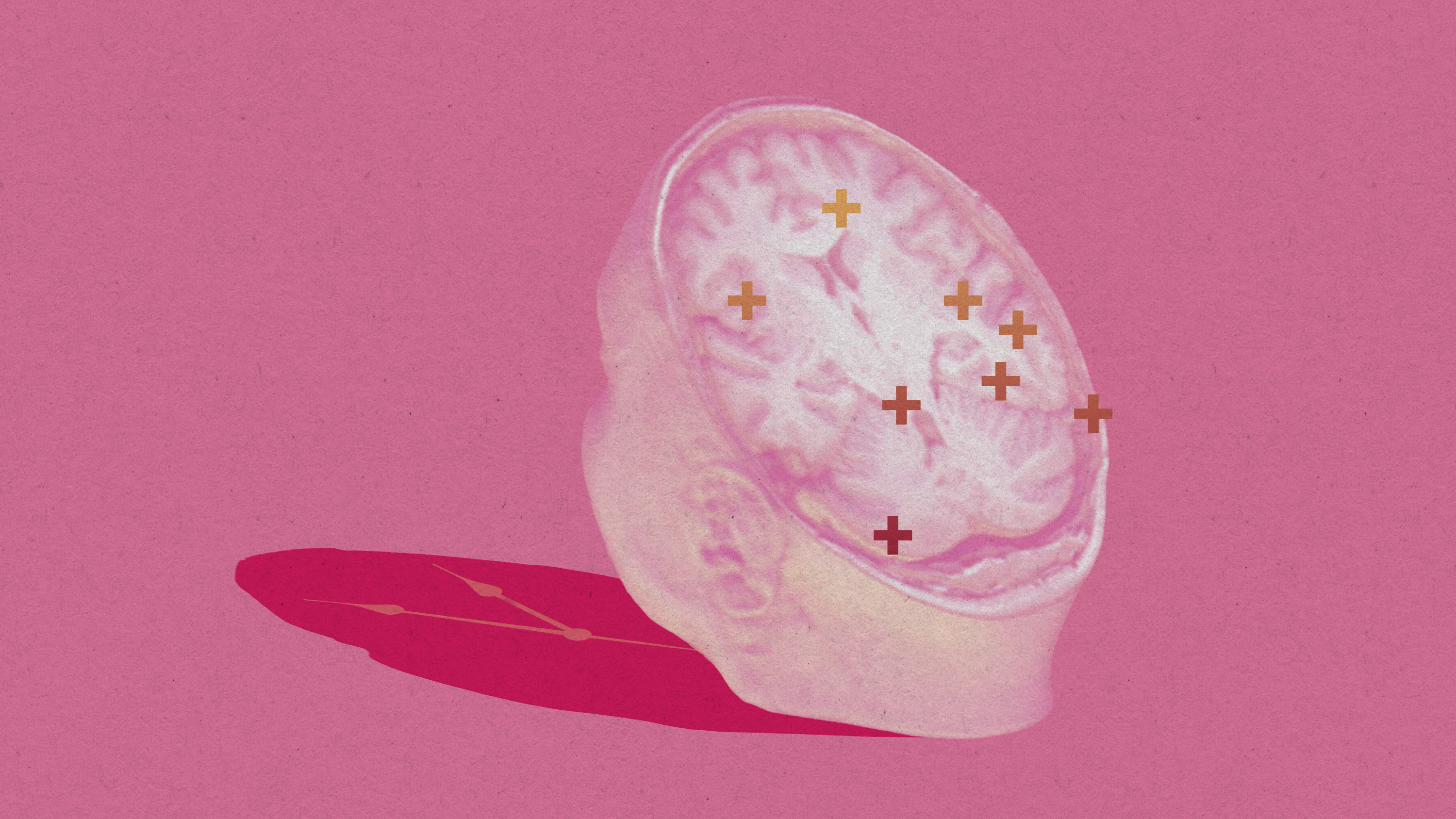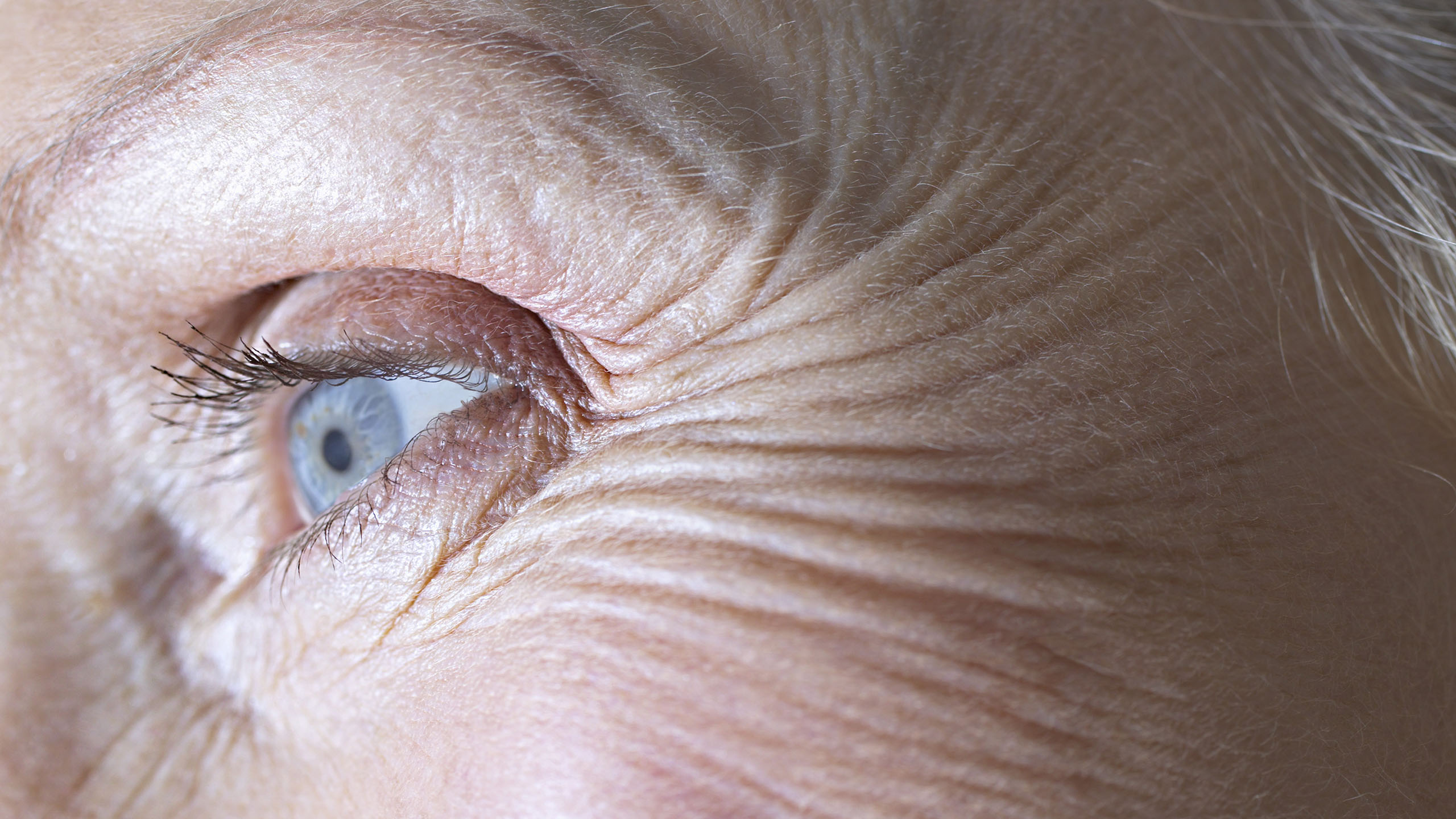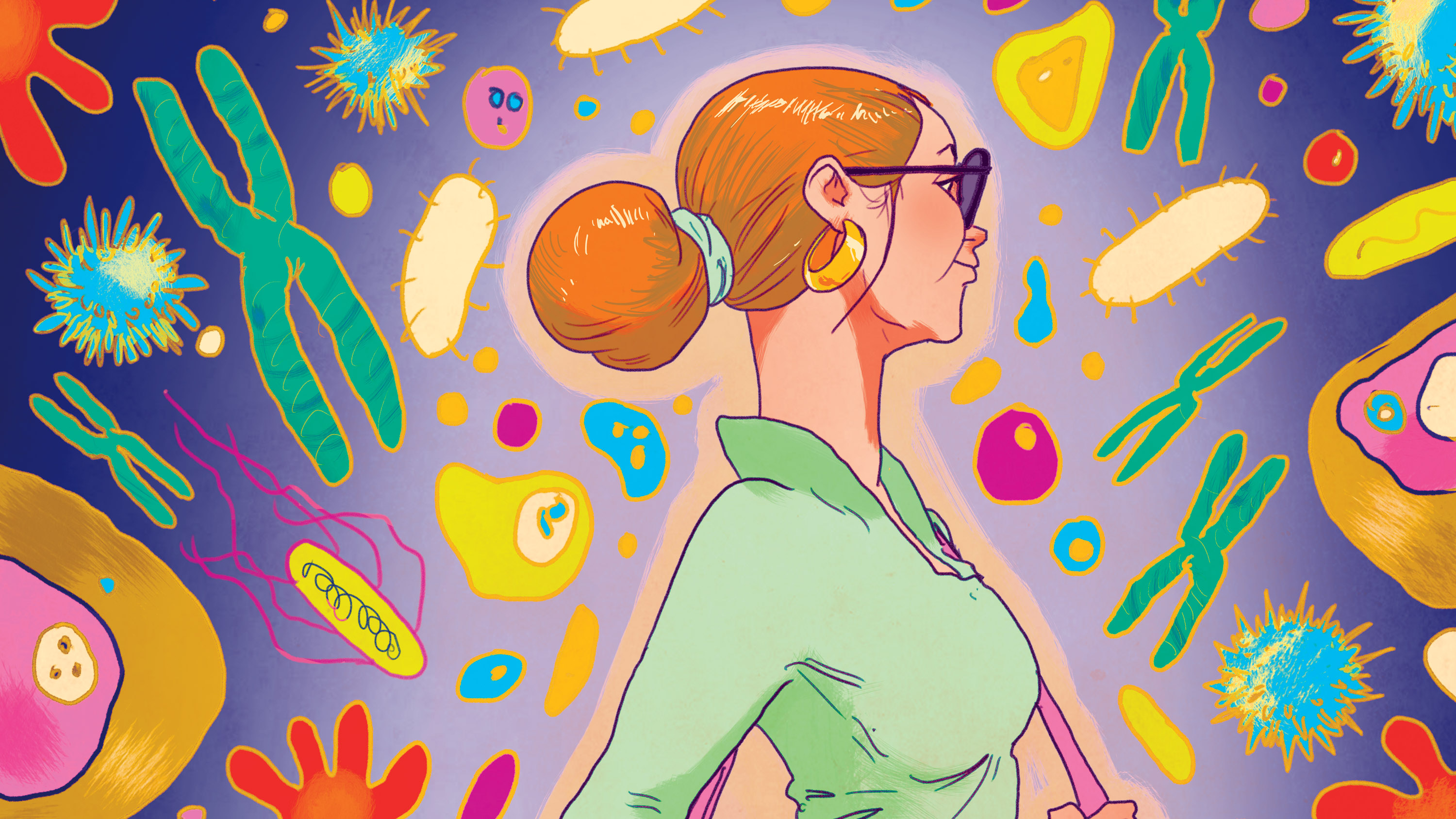This researcher wants to replace your brain, little by little
The US government just hired a researcher who thinks we can beat aging with fresh cloned bodies and brain updates.

A US agency pursuing moonshot health breakthroughs has hired a researcher advocating an extremely radical plan for defeating death.
His idea? Replace your body parts. All of them. Even your brain.
Jean Hébert, a new hire with the US Advanced Projects Agency for Health (ARPA-H), is expected to lead a major new initiative around “functional brain tissue replacement,” the idea of adding youthful tissue to people’s brains.
President Joe Biden created ARPA-H in 2022, as an agency within the Department of Health and Human Services, to pursue what he called “bold, urgent innovation” with transformative potential.
The brain renewal concept could have applications such as treating stroke victims, who lose areas of brain function. But Hébert, a biologist at the Albert Einstein school of medicine, has most often proposed total brain replacement, along with replacing other parts of our anatomy, as the only plausible means of avoiding death from old age.
As he described in his 2020 book, Replacing Aging, Hébert thinks that to live indefinitely people must find a way to substitute all their body parts with young ones, much like a high-mileage car is kept going with new struts and spark plugs.
The idea has a halo of plausibility since there are already liver transplants and titanium hips, artificial corneas and substitute heart valves. The trickiest part is your brain. That ages, too, shrinking dramatically in old age. But you don’t want to swap it out for another—because it is you.
And that’s where Hébert's research comes in. He’s been exploring ways to “progressively” replace a brain by adding bits of youthful tissue made in a lab. The process would have to be done slowly enough, in steps, that your brain could adapt, relocating memories and your self-identity.
During a visit this spring to his lab at Albert Einstein, Hébert showed MIT Technology Review how he has been carrying out initial experiments with mice, removing small sections of their brains and injecting slurries of embryonic cells. It’s a step toward proving whether such youthful tissue can survive and take over important functions.
To be sure, the strategy is not widely accepted, even among researchers in the aging field. “On the surface it sounds completely insane, but I was surprised how good a case he could make for it,” says Matthew Scholz, CEO of aging research company Oisín Biotechnologies, who met with Hébert this year.
Scholz is still skeptical though. “A new brain is not going to be a popular item,” he says. “The surgical element of it is going to be very severe, no matter how you slice it.”
Now, though, Hébert's ideas appear to have gotten a huge endorsement from the US government. Hébert told MIT Technology Review that he had proposed a $110 million project to ARPA-H to prove his ideas in monkeys and other animals, and that the government “didn’t blink” at the figure.
ARPA-H confirmed this week that it had hired Hébert as a program manager.
The agency, modeled on DARPA, the Department of Defense organization that developed stealth fighters, gives managers unprecedented leeway in awarding contracts to develop novel technologies. Among its first programs are efforts to develop at-home cancer tests and cure blindness with eye transplants.
It may be several months before details of the new project are announced, and it’s possible that ARPA-H will establish more conventional goals like treating stroke victims and Alzheimer’s patients, whose brains are damaged, rather than the more radical idea of extreme life extension.
President Biden created ARPA-H in 2022 to pursue “bold, urgent innovation” with transformative potential.
“If it can work, forget aging; it would be useful for all kinds of neurodegenerative disease,” says Justin Rebo, a longevity scientist and entrepreneur.
But defeating death is Hébert's stated aim. “I was a weird kid and when I found out that we all fall apart and die, I was like, ‘Why is everybody okay with this?’ And that has pretty much guided everything I do,” he says. “I just prefer life over this slow degradation into nonexistence that biology has planned for all of us.”
Hébert, now 58, also recalls when he began thinking that the human form might not be set in stone. It was upon seeing the 1973 movie Westworld, in which the gun-slinging villain, played by Yul Brynner, turns out to be an android. “That really stuck with me,” Hébert said.
Lately, Hébert has become something of a star figure among immortalists, a fringe community devoted to never dying. That’s because he’s an established scientist who is willing to propose extreme steps to avoid death. “A lot of people want radical life extension without a radical approach. People want to take a pill, and that’s not going to happen,” says Kai Micah Mills, who runs a company, Cryopets, developing ways to deep-freeze cats and dogs for future reanimation.
The reason pharmaceuticals won’t ever stop aging, Hébert says, is that time affects all of our organs and cells and even degrades substances such as elastin, one of the molecular glues that holds our bodies together. So even if, say, gene therapy could rejuvenate the DNA inside cells, a concept some companies are exploring, Hébert believes we’re still doomed as the scaffolding around them comes undone.
One organization promoting Hébert's ideas is the Longevity Biotech Fellowship (LBF), a self-described group of “hardcore” life extension enthusiasts, which this year published a technical roadmap for defeating aging altogether. In it, they used data from Hébert's ARPA-H proposal to argue in favor of extending life with gradual brain replacement for elderly subjects, as well as transplant of their heads onto the bodies of “non-sentient” human clones, raised to lack a functioning brain of their own, a procedure they referred to as “body transplant.”
Such a startling feat would involve several technologies that don’t yet exist, including a means to attach a transplanted head to a spinal cord. Even so, the group rates “replacement” as the most likely way to conquer death, claiming it would take only 10 years and $3.6 billion to demonstrate.
“It doesn’t require you to understand aging,” says Mark Hamalainen, co-founder of the research and education group. “That is why Jean’s work is interesting.”
Hébert's connections to such far-out concepts (he serves as a mentor in LBF’s training sessions) could make him an edgy choice for ARPA-H, a young agency whose budget is $1.5 billion a year.
For instance, Hebert recently said on a podcast with Hamalainen that human fetuses might be used as a potential source of life-extending parts for elderly people. That would be ethical to do, Hébert said during the program, if the fetus is young enough that there “are no neurons, no sentience, and no person.” And according to a meeting agenda viewed by MIT Technology Review, Hébert was also a featured speaker at an online pitch session held last year on full “body replacement,” which included biohackers and an expert in primate cloning.
Hébert declined to describe the session, which he said was not recorded “out of respect for those who preferred discretion.” But he’s in favor of growing non-sentient human bodies. “I am in conversation with all these groups because, you know, not only is my brain slowly deteriorating, but so is the rest of my body,” says Hébert. “I'm going to need other body parts as well.”
The focus of Hébert's own scientific work is the neocortex, the outer part of the brain that looks like a pile of extra-thick noodles and which houses most of our senses, reasoning, and memory. The neocortex is “arguably the most important part of who we are as individuals,” says Hébert, as well as “maybe the most complex structure in the world.”
There are two reasons he believes the neocortex could be replaced, albeit only slowly. The first is evidence from rare cases of benign brain tumors, like a man described in the medical literature who developed a growth the size of an orange. Yet because it grew very slowly, the man’s brain was able to adjust, shifting memories elsewhere, and his behavior and speech never seemed to change—even when the tumor was removed.
That’s proof, Hébert thinks, that replacing the neocortex little by little could be achieved “without losing the information encoded in it” such as a person’s self-identity.
The second source of hope, he says, is experiments showing that fetal-stage cells can survive, and even function, when transplanted into the brains of adults. For instance, medical tests underway are showing that young neurons can integrate into the brains of people who have epilepsy and stop their seizures.
“It was these two things together—the plastic nature of brains and the ability to add new tissue—that, to me, were like, ‘Ah, now there has got to be a way,’” says Hébert.
“I just prefer life over this slow degradation into nonexistence that biology has planned for all of us.”
One challenge ahead is how to manufacture the replacement brain bits, or what Hebert has called “facsimiles” of neocortical tissue. During a visit to his lab at Albert Einstein, Hébert described plans to manually assemble chunks of youthful brain tissue using stem cells. These parts, he says, would not be fully developed, but instead be similar to what’s found in a still-developing fetal brain. That way, upon transplant, they’d be able to finish maturing, integrate into your brain, and be “ready to absorb and learn your information.”
To design the youthful bits of neocortex, Hébert has been studying brains of aborted human fetuses 5 to 8 weeks of age. He’s been measuring what cells are present, and in what numbers and locations, to try to guide the manufacture of similar structures in the lab.
“What we're engineering is a fetal-like neocortical tissue that has all the cell types and structure needed to develop into normal tissue on its own,” says Hébert.
Part of the work has been carried out by a startup company, BE Therapeutics (it stands for Brain Engineering), located in a suite on Einstein’s campus and which is funded by Apollo Health Ventures, VitaDAO, and with contributions from a New York State development fund. The company had only two employees when MIT Technology Review visited this spring, and the its future is uncertain, says Hébert, now that he’s joining ARPA-H and closing his lab at Einstein.
Because it’s often challenging to manufacture even a single cell type from stem cells, making a facsimile of the neocortex involving a dozen cell types isn’t an easy project. In fact, it’s just one of several scientific problems standing between you and a younger brain, some of which might never have practical solutions. “There is a saying in engineering. You are allowed one miracle, but if you need more than one, find another plan,” says Scholz.
Maybe the crucial unknown is whether young bits of neocortex will ever correctly function inside an elderly person’s brain, for example by establishing connections or storing and sending electro-chemical information. Despite evidence the brain can incorporate individual transplanted cells, that’s never been robustly proven for larger bits of tissue, says Rusty Gage, a biologist at the Salk Institute in La Jolla, Calif., and who is considered a pioneer of neural transplants. He says researchers for years have tried to transplant larger parts of fetal animal brains into adult animals, but with inconclusive results. “If it worked, we’d all be doing more of it,” he says.
The problem, says Gage, isn’t whether the tissue can survive, but whether it can participate in the workings of an existing brain. “I am not dissing his hypothesis. But that’s all it is,” says Gage. “Yes, fetal or embryonic tissue can mature in the adult brain. But whether it replaces the function of the dysfunctional area is an experiment he needs to do, if he wants to convince the world he has actually replaced an aged section with a new section.”
In his new role at ARPA-H, it’s expected that Hébert will have a large budget to fund scientists to try and prove his ideas can work. He agrees it won’t be easy. “We're, you know, a couple steps away from reversing brain aging,” says Hébert. “A couple of big steps away, I should say.”
Deep Dive
Biotechnology and health

Aging hits us in our 40s and 60s. But well-being doesn’t have to fall off a cliff.
Lifestyle changes could counter some of the deterioration.

Beyond gene-edited babies: the possible paths for tinkering with human evolution
CRISPR will get easier and easier to administer. What does that mean for the future of our species?

A new law in California protects consumers’ brain data. Some think it doesn’t go far enough.
Tech companies collect brain data that could be used to infer our thoughts—so it’s vital we get legal protections right.

Maybe you will be able to live past 122
Scientific advances, public interest, and an unprecedented level of investment are pushing the longevity industry to help us live longer in better health.
Stay connected
Get the latest updates from
MIT Technology Review
Discover special offers, top stories, upcoming events, and more.